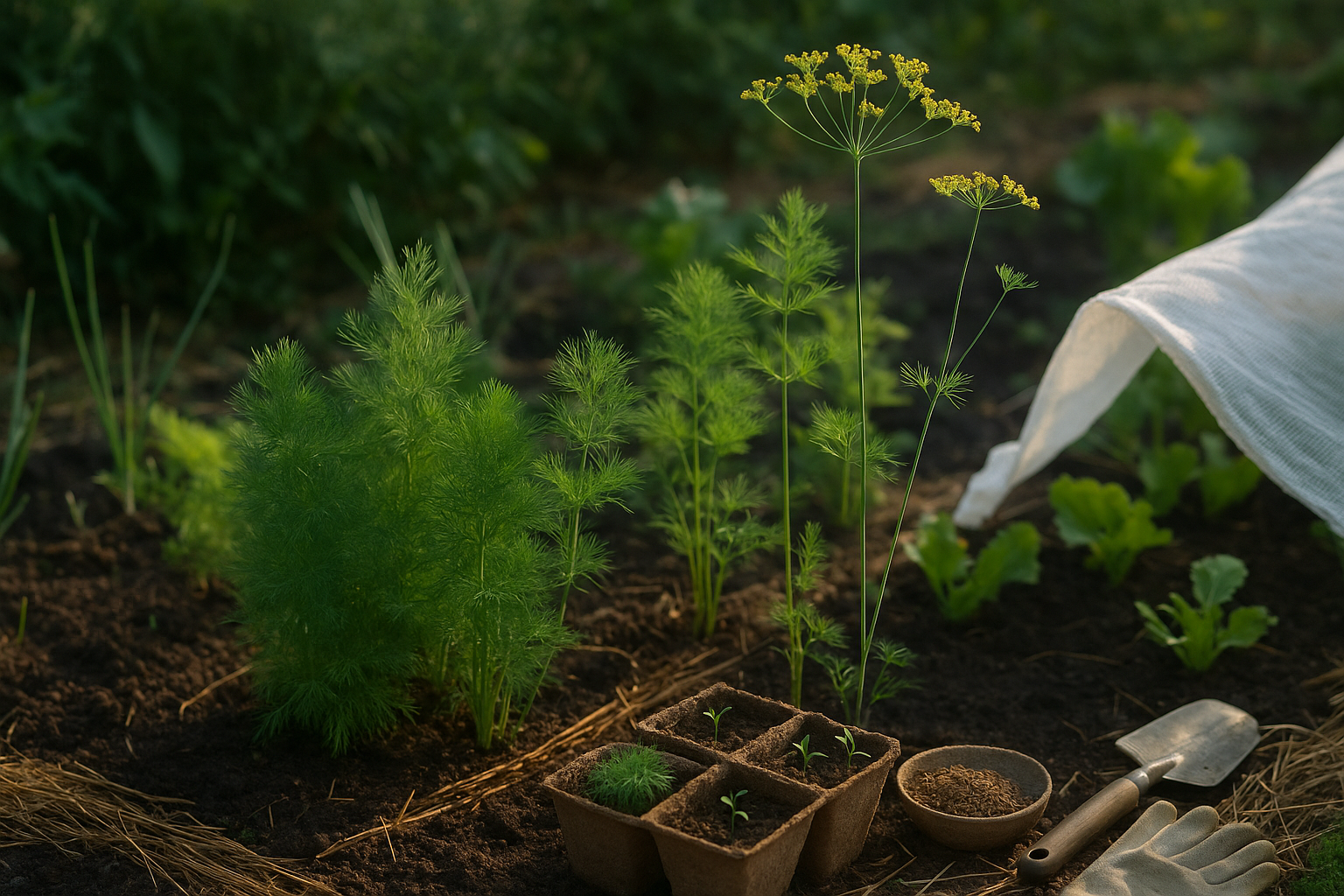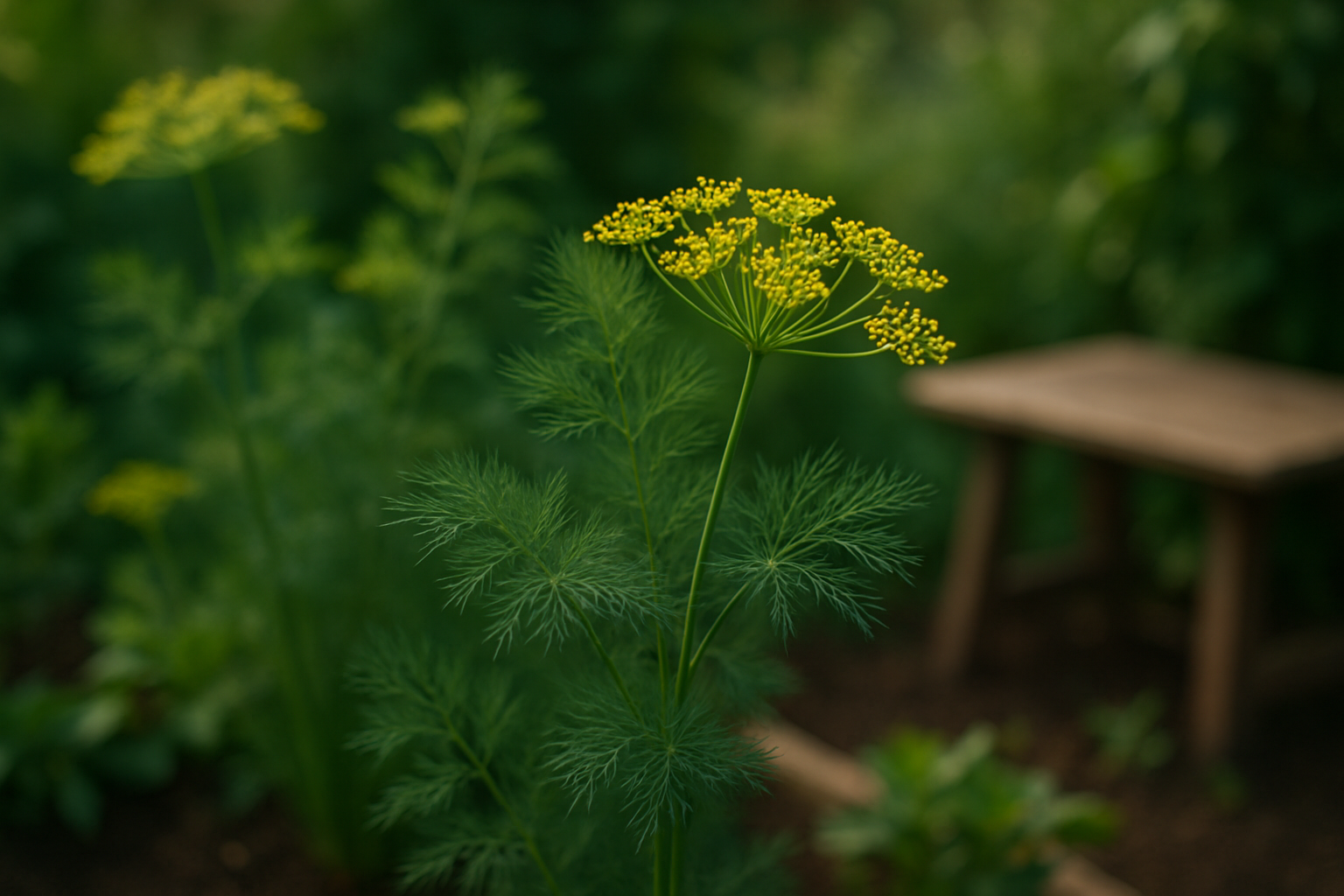“`html
Introduction
If you’ve noticed your dill plants shooting up flower stalks before you had the chance to harvest those aromatic leaves, you’re witnessing dill bolting. Dill bolting occurs when the plant starts flowering and setting seeds too early, often triggered by rising temperatures, sudden weather changes, or overcrowded planting conditions. While those umbrella-shaped yellow blooms are lovely to look at, they signal the end of dill’s best leaf-producing phase.
When dill bolts, its energy shifts from producing lush leaves to focusing on flowers and seeds. This means fewer, smaller, and tougher leaves for you to harvest. The flavor you love can become less vibrant or even bitter, making your homemade pickles or salads taste less fresh. Early flowering also affects seed quality, reducing their viability and flavor for future plantings or kitchen use.
Understanding the causes and effects of dill bolting is essential for a healthy, productive dill harvest. For example, planting dill in late spring or early autumn—when the risk of heat spikes is lower—gives your plants time to bush out before the urge to bolt kicks in. Regularly snipping flower buds as soon as they appear can help prolong leafy growth. Knowing why and how dill bolts empowers you to adapt your gardening strategy, keep your dill plants leafier for longer, and enjoy the freshest flavors from your herb patch. In short, managing bolting is key to making the most of every dill plant in your garden.
“`
Why Dill Bolts

Dill is prized for its feathery leaves and delicate flavor, but it can quickly bolt—meaning it prematurely flowers and sets seed—if certain growing conditions aren’t ideal. The most common trigger is high temperatures; dill is a cool-season herb, thriving best in spring or early fall when daily temperatures stay below 75°F (24°C).
As summer days get longer and hotter, dill senses the changing day length and heat as signals to reproduce, which kicks off the bolting process. Stress factors like drought, inconsistent watering, poor soil nutrition, or crowding can also push dill to flower early, as the plant “rushes” to complete its life cycle in less-than-ideal conditions.
You’ll spot symptoms of bolting when dill stems suddenly shoot up, growing taller and thinner than usual, followed quickly by the appearance of tiny, umbrella-shaped flower buds. Once these flowers form, leaf production slows and the delicate flavor of the foliage often turns bitter, making the plant far less appealing for kitchen use.
How to Delay Bolting
To delay bolting, plant dill in well-draining soil in a spot with morning sun and afternoon shade, and keep soil consistently moist but not soggy. Mulching around the base and spacing out seedlings can reduce stress, while planting early in the season helps avoid extreme heat. If a heatwave looms, covering dill with lightweight shade cloth can also help prevent that rapid, unwanted stretch toward flowering.
With a little attention to these growing conditions, you can keep your dill leafy and flavorful longer before nature’s cues take over.
How to Prevent Dill from Bolting Early
Preventing dill from bolting early starts with smart timing and site selection. For best results, sow seeds in early spring or late summer when daytime highs stay below 75°F, since heat causes dill to flower prematurely.
Choose a spot with morning sun and afternoon shade to keep roots cool; north-facing borders or beds shaded by taller plants can work well. Succession sowing — planting additional seeds every 2–3 weeks — ensures you always have fresh, leafy dill before any one planting bolts.
Keep soil consistently moist, but not soggy. Mulching with straw or compost helps lock in moisture and maintain an even temperature, which reduces stress on young plants. Avoid letting soil dry out completely, as even a brief drought can spur bolting.
Amend soil with organic matter before planting to improve drainage and boost nutrient retention, as healthy, fertile ground helps dill grow strong and less likely to rush to flower.
When it comes to varieties, look for ‘Bouquet’ or ‘Dukat’ dill, both known for slower bolting compared to other types.
For ongoing care, pinch out immature flower buds as soon as you spot them to redirect energy back into leaf production — this can extend harvest time by a week or more. Harvest leaves regularly, taking care not to remove more than a third of the plant at once, which keeps dill vigorous and delays flower formation.
With these simple steps, you can enjoy a longer, more abundant dill harvest all season.
What to Do When Your Dill Starts to Flower
When you notice your dill starting to flower, act quickly if you want to harvest flavorful leaves instead of seeds. As soon as you see small flower buds (before they fully open), pinch or snip off the developing flower heads using clean scissors—this redirects the plant’s energy back into producing more foliage.
Water your dill consistently but avoid soggy soil, and provide some afternoon shade if temperatures are high, as heat speeds up bolting.
If your main goal is collecting seeds, allow the flowers to mature and dry on the plant. Once the seeds darken and are easy to remove, cut the seed heads and place them upside-down in a paper bag to finish drying indoors.
For those wanting to extend leaf harvest even after bolting starts, keep removing new flower stalks and trim the upper leaves frequently to encourage fresh growth. Harvest in the morning when the oils and flavors are strongest.
Mulching around the base helps keep roots cooler and can prolong the leaf-producing period.
If bolting becomes inevitable, shift your focus to seed harvesting: cut the heads as the seeds turn tan, then store the dried seeds in an airtight jar for cooking or future planting.
By deciding early—leafy dill now or plenty of seeds later—you can adjust your approach and get the most from your dill patch all season long.
Harvesting and Using Bolted Dill

When dill plants bolt, they send up tall stems and quickly flower, often surprising gardeners expecting a longer leaf harvest. To make the most of a bolted dill plant, start by snipping any remaining feathery leaves. Though less abundant, they’re still perfect for fresh salads, yogurt dips, and garnishing fish.
Once flowers appear, you can cut the flower heads just as they start to bloom—use them immediately in cucumber pickles for that classic tang or toss whole flower heads into jars of vinegar for a flavorful infusion.
After flowers fade and seeds mature (turning brown), gently shake or snip seed heads into a paper bag to collect the aromatic seeds. These add a punch to bread, salad dressings, or roasted vegetables.
Note that bolted dill leaves tend to be less sweet and more bitter than non-bolted leaves, while flowers provide a subtle, citrusy lift, and seeds carry the most robust, anise-like flavor.
Preservation Tips
- Dill leaves and flowers dry well with minimal loss of flavor—simply hang them upside down in a cool, airy place.
- Dill seeds can be stored in airtight jars once fully dry.
- To keep fresh dill, wrap stems in a damp towel, seal in a plastic bag, and refrigerate for up to a week.
- Or chop and freeze leaves in olive oil or water in ice cube trays for quick access.
By understanding each stage of bolted dill, you can savor its unique flavors in your kitchen long after the garden season ends.
Saving Seeds and Planning for Next Season
Harvesting and saving dill seeds is a satisfying way to prepare for next year’s garden while preserving your favorite varieties. Start by allowing some of your dill plants to flower and form seed heads. Once the heads turn brown and dry on the stem, snip them off on a dry day.
Place the seed heads upside-down in a paper bag to catch any seeds that fall, then store the bag in a cool, well-ventilated spot for about a week. After drying, gently shake or rub the seed heads to release the seeds. Store the collected dill seeds in a labeled, airtight container in a cool, dark place—glass jars or paper envelopes work well.
When planning next year’s garden, use crop rotation to reduce pest and disease buildup: avoid planting dill or other members of the carrot family (Apiaceae) in the same spot every year. Instead, rotate to a new bed to keep the soil healthy and minimize problems.
Additionally, employ succession planting by sowing small batches of dill seeds every few weeks during the growing season. This ensures a continuous harvest and helps prevent plants from bolting all at once due to heat. Starting early in spring and sowing again in late summer can also reduce rapid bolting during midsummer heat.
For the best results next season, choose a sunny site with well-drained soil, water consistently but avoid waterlogging, and thin seedlings properly to allow good airflow.
If you’re new to saving seeds or succession planting, don’t worry—start small and learn as you go. With a bit of planning, you’ll enjoy a steady supply of fresh dill all season long, and saving seeds will make your gardening more economical and rewarding year after year.
